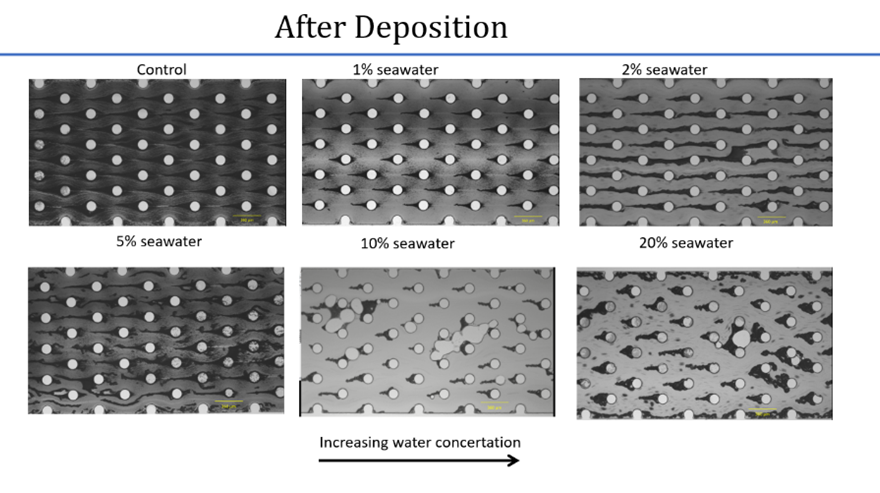2024 AIChE Annual Meeting
Evaluation of Asphaltene Deposition Using Seawater/Oil Emulsions in a Porous Media Microfluidic Device
Asphaltenes are the heaviest, most complex, and most polar component of crude oil. Asphaltenes often aggregate and deposit in oil pipelines, plugging flow and reducing production. This presents a severe flow assurance challenge in the oil & gas industry, with up to millions of dollars in lost production and treatment costs. Asphaltenes are amphiphilic and thus stabilize water in oil emulsions. While this is known, there is limited knowledge on how the presence of water impacts asphaltenes behavior. This study aims to use microfluidic methods to investigate the effect of emulsified crude oil-sea water solutions on asphaltenes’ behavior. The methods of the experiment are as follows. Synthetic sea salt was mixed in deionized (DI) water to make synthetic seawater. Seawater was emulsified with crude oil using a probe sonicator for 5 minutes. The seawater to crude oil ratio explored in this project ranged from 0 (control) to 30%. The experiments were conducted in low porosity porous media microfluidic devices to mimic behavior in a near wellbore region. The microfluidic devices were fabricated using NOA-81 (Norland Optical Adhesive), a thiolene photopolymer. NOA-81 has been proven to be resistant to organic chemicals and low/high temperatures, making it suitable for asphaltene experiments. Water-emulsified crude oil and n-heptane are co-injected at a 50 μL/min flow rate through the microfluidic device at the onset ratio to promote the formation of asphaltenes deposits. Asphaltene deposition is observed and recorded through an inverted microscope connected to a camera. The pressure differential across the microfluidic device was also recorded throughout the experiment. Following the deposition phase, heptane is disconnected from the syringe pump. Water-emulsified crude oil is pumped through the microfluidic device at an increasing flow rate from 50 to 200 μL/min to shear off the asphaltene deposits. Image analysis is leveraged to calculate the percentage of porous media area blocked by asphaltene deposits. Different concentrations of water emulsified in crude oil had varying impacts on asphaltene deposition. It was found in all water emulsion cases except the 5% case that there was less deposition than in the control case. The results show that at an optimal salinity concentration (OSC) of 1% water emulsified in crude oil, the asphaltene coverage on the porous media decreased by 63% from the control after the deposition period. It was also found that the asphaltene deposits were less resistant to shear in the water-emulsified crude oil cases than in the control case.


